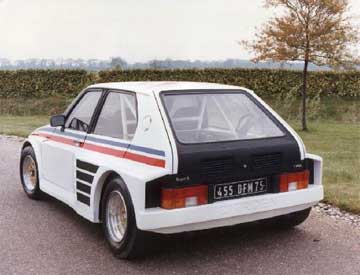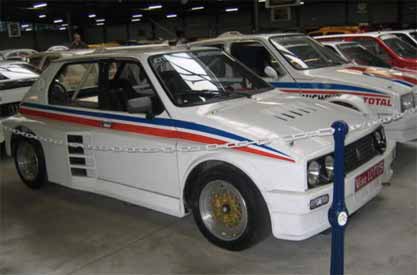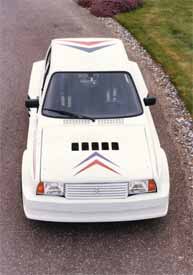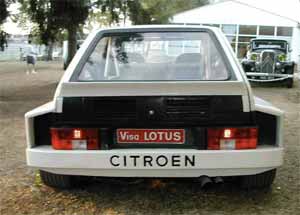
CitroŽn Visa Lotus
To see, go to: www.banovsky.com
January 2015

Commercial Photographer Michael Provost, Manager of bigpix and Airpix with his 1989 Lotus Esprit. Photo / Ted Baghurst
By Donna McIntyreEvery now and then, I find my mind wandering toward the Citroën back catalogue, a place filled with some of the most extreme ideas from the brightest automotive engineers. It's not so much the outright strangeness of their designs, rather, the extreme research and development budget that gave us prototypes as varied as the rotary-powered Citroën M35 coupe and today's car, the Citroën Visa Lotus.
If the Oltcit Club 11R is possibly the worst supermini to come from Citroën's design department, its polar opposite, the Visa Lotus, has got to be the best.

With most automaker tie-ups, the assisting car company provides its expertise with suspension tuning or engine tuning or styling help. In this case, there was clearly nothing Lotus could do to turn a hatchback normally powered by a 652-cc 2-cylinder engine into a World Rally Championship-level Renault R5 Turbo competitor.
Like Renault before it, Lotus decided on a mid-engine layout. But unlike their rivals, engineers tasked with making the Visa faster came up with a quick solution: to place the body of their subcompact on top of a Lotus Esprit chassis. My favourite part? Its tiny overall size helps to put into perspective just how small the low-slung Esprit was.
From there, the spec sheet reads like the one Q Branch was given when looking for a suitable car to turn into a submarine, just in case their beloved 007 wanted to partake in some scuba.
Its 2,174-cc engine and single turbocharger were enough for around 210 horsepower. With a reported weight of around 1,000 kg, it would have certainly matched the Renault R5 Turbo for on-road pace. More importantly, its bodywork is just one big box flare that includes a simply sinister hatch that features cooling vents and a look at the car's meaty rear tires.
In testing, however, engineers quickly deemed it unsuitable for off-road use—I'm sure any surviving members of that team would have been surprised to see an Esprit survive Argentina on Top Gear recently. Two prototypes were built, and one survives.
As rad as this car is, it's worth noting that Citroën had other companies develop rally concepts, with a number of firms competing to make the best competition Visa. It must have been routine then, but now the sight of a half-dozen top secret Citroën rally car prototypes (including a twin engine example) testing on a special stage is quite the sight to behold.

Sources
• Citroën Visa Lotus: visaforum.freeforums.org, theamazoeffect.blogspot.com, lotusdriversguide.com, pistonheads.com
• Citroën Visa: Wikipedia
In 1981, Citroen wanted to participate in the World Rally Championship, starting with their then-new model, the Visa. And so the ‘Genesis Project’ was started. Guy Verrier, responsible for Citroen’s Motorsport division, launched the Visa Rally Trophy and wanted to create a car that could compete with the Renault 5 Turbo. Citroen wanted to challenge Renault by creating a car that could compete in Group B. Various constructors and companies were asked to create a study model. This resulted in 8 different prototypes being built with power ranging from 145 to 290 bhp and engines from 1219 to 1440 cc. In fact the prototype showed here is a Lotus Esprit Turbo chassis with the body from a Citroen Visa, with the usual 4 cylinder 2174cc, 210bhp Lotus engine and 5 speed 'box from the Citroen SM.

In 1982, a number of tests were done but the program was ended quickly after that; the success of the all-conquering Audi Quattro convinced PSA (and a lot of other competitors) that 4WD was the way to go. With just RWD, it was always going to struggle and so it actually never raced. Only two Lotus Visa prototypes were built; one is currently kept at Citroen's heritage centre, The Conseratoire Museum at the Aulney-sous-Bois factory in Paris.
